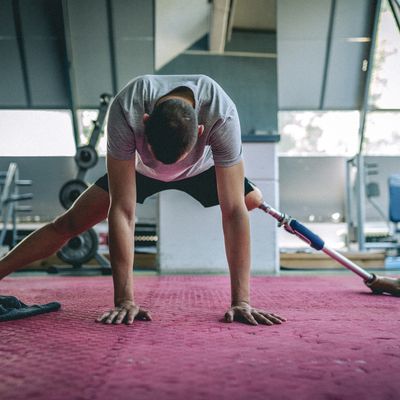Disability Exercise

Disability Exercise for females & Males That Don't Have Behaviours
Sorry, I am not able to take people in wheelchairs due to my exercise program and equipment.
My Disability Exercise is for both females and males without bad behaviour.
I spent many years in disability and aged care and have a Cert 4 in Disability and Cert 4 in Trainer & Assessor, and Cert 4 in Exercise.
Benefits of Exercise for People with Disabilities
Physical activity is essential for all individuals, including those with disabilities. Exercise supports physical health, mental well-being, and functional independence. Below is a detailed overview of the benefits of Cardiovascular, Endurance, Flexibility & Balance, Mind-Body & Mental Wellness, and Strength exercises for people with disabilities.
1. Cardiovascular Exercise
Definition: Cardiovascular exercise involves activities that increase heart rate and breathing, improving the efficiency of the heart, lungs, and circulatory system. Examples include arm cycling, wheelchair pushes, swimming, and seated aerobic exercises.
Benefits for people with disabilities:
- Heart health: Strengthens the heart and improves blood circulation, reducing the risk of heart disease.
- Energy levels: Enhances stamina and reduces fatigue, supporting daily activities.
- Weight management: Assists in maintaining a healthy body weight, which is crucial for mobility and overall health.
- Mood improvement: Releases endorphins, reducing stress and anxiety.
- Respiratory function: Enhances lung capacity and breathing efficiency.
2. Endurance Exercise
Definition: Endurance exercises are activities that sustain prolonged effort and improve overall stamina and functional capacity.
Benefits for people with disabilities:
- Functional independence: Improves the ability to perform daily tasks, such as moving around the house or community.
- Muscle efficiency: Increases muscle resistance to fatigue during repetitive tasks.
- Metabolic health: Supports healthy blood sugar and cholesterol levels.
- Cardiopulmonary support: Strengthens the heart and lungs, complementing cardiovascular exercise.
3. Flexibility & Balance Exercise
Definition: Flexibility exercises improve joint range of motion, while balance exercises enhance stability and coordination. Examples include stretching, yoga, tai chi, and seated mobility drills.
Benefits for people with disabilities:
- Reduced risk of injury: Increases joint mobility and reduces the likelihood of falls.
- Improved posture and alignment: Supports spinal health and reduces musculoskeletal pain.
- Enhanced mobility: Makes daily movements, transfers, and reaching easier.
- Balance & coordination: Helps prevent accidents and improves confidence in movement.
- Pain relief: Stretching and mobility exercises can reduce stiffness and discomfort, particularly in conditions like cerebral palsy, arthritis, or spinal cord injuries.
4. Mind-Body & Mental Wellness Exercise
Definition: Mind-body exercises combine physical movement with mental focus, relaxation, or meditation. Examples include deep breathing, meditation, yoga, and tai chi.
Benefits for people with disabilities:
- Stress reduction: Lowers cortisol levels and helps manage anxiety.
- Improved mental clarity: Enhances concentration, memory, and cognitive function.
- Emotional well-being: Increases mood stability and reduces symptoms of depression.
- Body awareness: Improves proprioception, coordination, and awareness of movement limitations.
- Sleep quality: Regular practice can improve rest and recovery.
5. Strength Exercise
Definition: Strength exercises involve resistance training to improve muscle mass, bone density, and overall functional capacity. Examples include seated weight lifting, resistance bands, bodyweight exercises, or water-based strength activities.
Benefits for people with disabilities:
- Functional independence: Enhances the ability to perform daily activities, such as standing, lifting, or transferring.
- Joint support: Strengthens muscles around joints, reducing pain and injury risk.
- Bone health: Helps prevent osteoporosis and maintain bone density.
- Metabolic support: Improves insulin sensitivity and overall metabolism.
- Confidence and body control: Builds self-efficacy and confidence in mobility.
Conclusion
Exercise is not only feasible but highly beneficial for people with disabilities. A well-rounded program combining cardiovascular, endurance, flexibility, balance, mind-body, and strength exercises supports physical health, functional independence, and mental well-being. Programs should be adapted to individual abilities, safety considerations, and personal goals to maximise benefits and enhance quality of life.